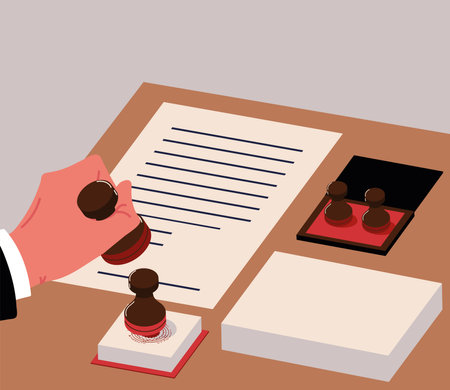Understanding Workplace Conflict
Workplace conflict is an inevitable part of professional life in the United States, impacting both employees and employers. Recognizing the types of conflicts that commonly arise and their underlying causes can help organizations address issues early and effectively. Below is a table summarizing frequent workplace conflicts, their root causes, and why managing them is essential:
| Type of Conflict | Root Causes | Importance of Addressing |
|---|---|---|
| Interpersonal Disputes | Personality clashes, miscommunication, cultural differences | Prevents toxic environments; supports teamwork |
| Harassment or Discrimination | Bias, prejudice, lack of awareness | Ensures legal compliance; promotes diversity and inclusion |
| Workload or Task Allocation | Poor management, unclear roles, unequal distribution of responsibilities | Avoids burnout; boosts morale and productivity |
| Compensation Disagreements | Lack of transparency, perceived inequity, unmet expectations | Enhances retention; builds trust in management |
Addressing these conflicts proactively is critical for a healthy work environment. In the U.S., both federal and state laws regulate workplace behavior to protect employees rights and ensure fair treatment. When conflicts are left unresolved, they can escalate into legal disputes, damage company reputation, decrease employee satisfaction, and even result in costly litigation. By understanding the sources and significance of workplace conflict, employees and employers alike are better equipped to foster collaboration and maintain legal compliance.
2. Relevant Employment Laws and Regulations
Understanding the legal framework surrounding workplace conflict is essential for every employee in the United States. Both federal and state laws play a significant role in shaping how workplace disputes are addressed, ensuring that employees’ rights are protected against discrimination, harassment, and unfair treatment. Below is an overview of key laws and regulations that directly impact workplace conflict resolution.
Key Federal Laws Governing Workplace Conflicts
Several federal statutes provide broad protections to employees across all states. The table below summarizes some of the most critical federal laws:
| Law | Scope | Protection Provided |
|---|---|---|
| Title VII of the Civil Rights Act of 1964 | All employers with 15+ employees | Prohibits discrimination based on race, color, religion, sex, or national origin; covers harassment and retaliation claims |
| Americans with Disabilities Act (ADA) | Employers with 15+ employees | Protects individuals with disabilities from discrimination; requires reasonable accommodation in the workplace |
| Age Discrimination in Employment Act (ADEA) | Employers with 20+ employees | Bans discrimination against employees aged 40 or older |
| Family and Medical Leave Act (FMLA) | Employers with 50+ employees | Grants eligible employees up to 12 weeks of unpaid leave for family or medical reasons; protects against retaliation for taking leave |
| Equal Pay Act (EPA) | All employers covered by the Fair Labor Standards Act (FLSA) | Requires equal pay for equal work regardless of gender |
State-Specific Protections
In addition to federal law, each state may have its own set of employment laws providing greater or additional protections. For example, California’s Fair Employment and Housing Act (FEHA) expands on federal protections by covering more employers and adding categories like sexual orientation and gender identity. New York State Human Rights Law also provides robust anti-discrimination protections that exceed federal standards in certain areas.
Navigating Differences Across States
The rights and remedies available to employees can vary significantly depending on the state where they work. It is important for employees to be familiar with both federal regulations and their specific state’s labor laws. Employees who experience workplace conflict should consult both their HR department and local legal resources to understand which laws apply to their situation.
Why Awareness Matters for Employees
Being knowledgeable about these legal protections empowers employees to recognize when their rights may have been violated and seek appropriate recourse. Whether addressing issues informally or filing formal complaints, understanding the relevant employment laws is a crucial first step in resolving workplace conflicts effectively.

3. Harassment, Discrimination, and Retaliation Protections
Understanding the legal framework surrounding harassment, discrimination, and retaliation is essential for every employee in the United States. These protections are rooted in federal laws and are designed to ensure a safe and fair workplace environment. Below, we discuss what constitutes each of these issues under U.S. law, how retaliation is defined, and the specific legal safeguards that employees can rely on when workplace conflicts arise.
What Constitutes Harassment and Discrimination?
Harassment and discrimination in the workplace are strictly prohibited by several key federal statutes, including Title VII of the Civil Rights Act of 1964, the Americans with Disabilities Act (ADA), and the Age Discrimination in Employment Act (ADEA). These laws protect individuals from adverse treatment based on race, color, religion, sex (including pregnancy, sexual orientation, or gender identity), national origin, disability, or age.
| Type | Definition | Examples |
|---|---|---|
| Harassment | Unwelcome conduct based on protected characteristics that creates a hostile or offensive work environment. | Sexual jokes, racial slurs, offensive remarks about religion or disability. |
| Discrimination | Treating an employee unfavorably because of their protected status under federal law. | Denying promotion due to age; unequal pay based on gender; refusing reasonable accommodation for a disability. |
How Is Retaliation Defined?
Retaliation occurs when an employer takes adverse action against an employee for engaging in legally protected activities. Protected activities include filing a complaint of harassment or discrimination, participating in an investigation, or opposing unlawful practices. Adverse actions might involve demotion, termination, salary reduction, or undesirable job assignments as a response to these activities.
Common Forms of Retaliation:
- Firing or laying off the employee after they report misconduct
- Demoting or reducing work hours following a complaint
- Giving unwarranted negative performance reviews tied to protected activity
- Exclusion from meetings or training opportunities as punishment for asserting rights
Legal Protections in Conflict Situations
The Equal Employment Opportunity Commission (EEOC) enforces federal laws relating to harassment, discrimination, and retaliation. Employees who believe their rights have been violated may file a charge with the EEOC or with their state’s fair employment agency. Employers are prohibited from retaliating against employees who assert their rights under these laws. Additionally, many states have their own anti-discrimination statutes that provide even broader protections than federal law.
Key Takeaways for Employees:
- You have the right to a workplace free from harassment and discrimination.
- You are legally protected when you speak up about unfair treatment or participate in investigations.
- If you experience retaliation for asserting your rights, you can seek legal recourse through government agencies like the EEOC.
Being informed about your legal protections empowers you to address workplace conflicts confidently and seek assistance if your rights are violated.
4. Reporting and Resolving Conflicts Legally
Addressing workplace conflicts legally requires a clear understanding of your rights, company procedures, and the role of Human Resources (HR). Taking the right steps not only protects you but also ensures compliance with state and federal employment laws. Below are best practices for reporting and resolving conflicts in a lawful and effective manner.
Follow Company Procedures
Every organization should have a conflict resolution or grievance policy outlined in the employee handbook. Familiarize yourself with these policies before an issue arises. Following established procedures is essential; failure to do so may jeopardize your claim or delay resolution. Typically, companies require employees to attempt informal resolution first, such as discussing concerns directly with the person involved or with a supervisor.
Typical Steps for Reporting Conflicts
| Step | Description |
|---|---|
| Informal Discussion | Address the issue directly with the colleague or supervisor involved, if safe and appropriate. |
| Written Complaint | If informal discussion fails, submit a written complaint following your company’s guidelines. |
| HR Involvement | Escalate the matter to Human Resources for formal investigation and documentation. |
| External Reporting | If internal processes do not resolve the issue or if it involves illegal activity (e.g., discrimination, harassment), report to appropriate state or federal agencies like EEOC. |
Interacting with Human Resources
Human Resources acts as a neutral party in conflict investigations. When reporting an issue to HR, provide clear, factual details without exaggeration or emotional language. Keep records of all communications and evidence relevant to your case. Request updates on the status of your complaint and ask about confidentiality protections available under company policy.
Key Tips for Legal Compliance
- Document Everything: Keep copies of emails, incident reports, meeting notes, and timelines.
- Avoid Retaliation: Know that retaliation against employees who report issues is illegal under U.S. law. If you experience retaliation, document it and report immediately.
- Maintain Professionalism: Stay respectful and factual during interactions, even if the situation is stressful.
- Seek Support: Consult with an employment attorney or legal aid service if you believe your rights are being violated.
Summary Table: Dos and Donts When Reporting Workplace Conflicts
| Dos | Donts |
|---|---|
| Follow company protocol step-by-step | Breach confidentiality agreements |
| Use written communication for documentation | Make threats or use inflammatory language |
| Report retaliation immediately | Ignore deadlines for filing complaints |
| Ask HR about anti-retaliation protections | Solve serious legal issues informally if unsafe/illegal behavior is involved |
The key to legally resolving workplace conflict lies in knowing your rights, following your employer’s procedures, engaging HR appropriately, and seeking external help when necessary. This approach not only increases your chances of a fair outcome but also ensures you are protected under U.S. employment law.
5. Employee Rights and Responsibilities
Understanding your rights and responsibilities as an employee is crucial when navigating workplace conflict. U.S. labor laws provide a framework designed to protect workers from unfair treatment, discrimination, harassment, and retaliation. At the same time, employees are expected to uphold certain standards of conduct and engage in constructive efforts to resolve disputes.
Your Legal Rights in Workplace Conflict
Employees in the United States have several legal protections under federal and state laws. These rights ensure you can address workplace conflicts without fear of unfair repercussions:
| Legal Right | Description | Relevant Laws/Agencies |
|---|---|---|
| Freedom from Discrimination | Protection against unfair treatment based on race, gender, age, religion, disability, or other protected characteristics | Title VII of the Civil Rights Act, ADA, ADEA, EEOC |
| Right to a Safe Workplace | The right to work in an environment free from threats, violence, or unsafe conditions | OSHA |
| Protection from Retaliation | You cannot be punished for reporting concerns or participating in investigations | Whistleblower Protection Laws, EEOC |
| Right to Report Misconduct | Ability to report unethical or illegal activities internally or externally without fear of reprisal | Sarbanes-Oxley Act, State Whistleblower Laws |
| Access to Due Process | The right to a fair process during investigations and disciplinary actions | Company Policies, Labor Agreements, State Laws |
Your Responsibilities During Workplace Conflict
While employees are protected by law, they also have responsibilities that help maintain a professional and respectful work environment. Proactive participation in resolving conflicts not only strengthens workplace relationships but can also be favorable if legal intervention becomes necessary.
- Maintain Professionalism: Communicate respectfully even when disagreements arise. Avoid personal attacks or escalation.
- Follow Company Procedures: Adhere to internal policies for reporting and addressing conflicts. Utilize HR channels or ombudspersons as outlined in your employee handbook.
- Document Incidents: Keep clear records of any incidents related to conflict—dates, times, participants, and outcomes. Documentation is vital if the situation escalates.
- Participate in Good Faith: Engage sincerely in mediation or conflict resolution processes offered by your employer.
- Avoid Retaliatory Behavior: Refrain from retaliating against coworkers; this could put you at risk legally and professionally.
- Pursue Resolution Internally First: Whenever possible, attempt to resolve issues internally before seeking external legal remedies.
The Balance Between Rights and Responsibilities
Navigating workplace conflict effectively requires both understanding your legal protections and fulfilling your role as a responsible employee. By staying informed and acting with integrity, you contribute to a healthier workplace culture while safeguarding your own interests.
6. When to Seek Legal Help
Workplace conflicts can often be resolved internally through HR channels, mediation, or open communication. However, there are situations where involving legal counsel becomes necessary to protect your rights and interests. Understanding when to make this move is crucial for employees navigating the complexities of workplace disputes in the United States.
Recognizing Scenarios That Warrant Legal Counsel
Not every disagreement needs legal intervention, but some scenarios require professional guidance. Below is a table outlining common situations where seeking legal help may be appropriate:
| Scenario | Description | Why Legal Help is Needed |
|---|---|---|
| Discrimination or Harassment | You experience discrimination or harassment based on race, gender, age, religion, disability, or another protected class. | Federal and state laws protect against such actions; legal counsel ensures your rights are upheld. |
| Retaliation | You face negative consequences (demotion, termination) after reporting misconduct or participating in an investigation. | Retaliation is illegal; a lawyer can help you document and pursue a claim. |
| Wage and Hour Violations | Your employer fails to pay overtime, minimum wage, or withholds earned wages. | These are violations of the Fair Labor Standards Act (FLSA); legal action may recover lost wages. |
| Wrongful Termination | You believe you were fired for unlawful reasons (e.g., whistleblowing). | An attorney can assess if your termination violated any employment laws. |
| Breach of Employment Contract | Your employer does not honor terms of your written agreement. | Legal counsel helps enforce contractual rights or negotiate settlements. |
| Unsafe Working Conditions | Your safety concerns are ignored by management despite repeated reports. | An attorney can advise on OSHA regulations and help file complaints. |
Steps to Take if Internal Efforts Fail
If youve exhausted internal resolution processes—such as speaking with your manager, contacting HR, or participating in mediation—and your issue remains unresolved, consider these steps before reaching out to a lawyer:
- Document Everything: Keep detailed records of incidents, communications, and any actions taken by you or the company. This documentation will be critical if legal action is necessary.
- Review Company Policies: Familiarize yourself with your employee handbook and any relevant workplace policies. Knowing your companys procedures can help strengthen your position.
- Understand Your Rights: Research federal and state laws related to your issue. The Equal Employment Opportunity Commission (EEOC) and Department of Labor websites offer valuable resources for employees.
- Consult with a Legal Professional: Seek out attorneys who specialize in employment law. Many offer free initial consultations to evaluate the merits of your case without obligation.
- File Formal Complaints: If advised by legal counsel, you may need to file formal complaints with government agencies such as the EEOC or OSHA before pursuing litigation.
The Bottom Line: Protect Yourself Legally
If internal resolution efforts fail and you find yourself facing serious workplace issues like discrimination, retaliation, wage theft, or contract breaches, seeking legal help is often the best path forward. Acting promptly protects your rights under U.S. law and increases the likelihood of a favorable outcome. Remember: while most workplace problems can be solved without going to court, knowing when to involve an attorney ensures you’re prepared for any situation that arises.


